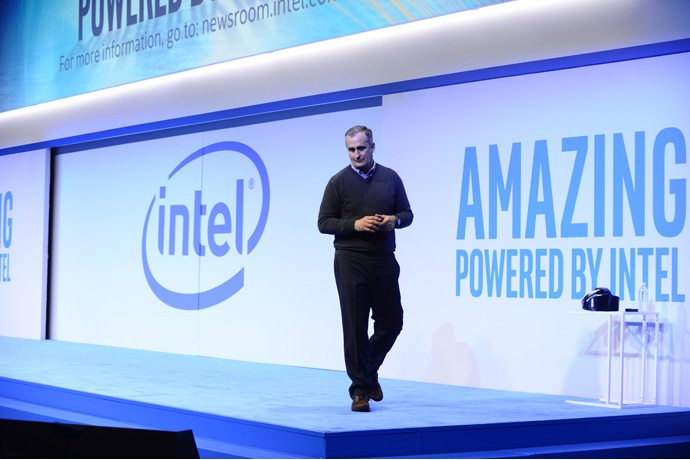Intel plans to sample its first 5G modem this year, and the world’s largest chipmaker is determined to win more business with developers of 5G equipment than it has with LTE equipment makers. Qualcomm, which dominates the market for LTE modems, has already announced a 5G modem, but Intel says its offering is superior because it supports more spectrum bands.
“We believe it’s the world’s first global 5G modem and the reason we say global is because of the frequency band support,” said Asha Keddy, VP and general manager for standards and advanced technology in Intel’s mobile communication group. The modem’s baseband chip pairs with a transceiver that supports the 3.3-4.2 GHz frequencies used in China and Europe, as well as the 28 GHz band, which both Verizon Wireless and AT&T are using to test 5G. Intel will sample the transceiver this month.
Intel expects to see speeds of up to 5 gigabits per second on devices using its new modem. The company said the modem supports 3GPP 5G new radio technology, including massive multiple-input multiple-output, beamforming, low latency frame structure, and advanced channel coding. Device makers will be able to pair the modem with Intel’s XMM 7360 LTE modem for LTE/5G dual connectivity. Modem and module samples will be available by the second half of this year, the company said.
Although Intel doesn’t have a strong LTE track record, the company believes 5G will be a different story because next generation networks will rely heavily on the cloud, where Intel-powered servers are dominant. Keddy said the company is preparing to help carriers implement 5G throughout their networks.
“We believe that the network is as important as the devices, and hence as we position ourselves around 5G, having learned many, many lessons from the previous generations in wireless, we take an end to end play,” Keddy said. “The 3GPP standard has to cover everything from client devices to system architecture to the core network.”
Intel sees 5G as an enabling technology for the internet of things, and Keddy said she divides use cases into three primary vectors. One is machine-to-machine connectivity, which has applications in agriculture, manufacturing and smart cities. Another is enhanced mobile broadband on communication and entertainment devices, which will include virtual reality. The third is low latency applications for mobile connected devices like drones and connected cars. All of these use cases need to be considered as the 5G standard evolves.
“Today’s mobile world was built for smartphones with voice and data in mind,” said Aicha Evans, corporate vice president for Intel’s devices and communications group, in a recent blog post. “In tomorrow’s world, nothing is mobile because everything is mobile. It will be a world built for connected cars, connected factories and connected drones, to name a few examples. The machines are coming and we are going to need the next era of wireless technology to bring new connections and unique capabilities to the connected world. That next era is 5G.”
Intel is working hard to build its 5G partner relationships as well as its 5G technology. The chipmaker has been part of Verizon’s 5G Technology Forum for more than a year, and last month AT&T said it has chosen Intel’s Austin, TX office as the site of its first 5G business customer trial.
Follow me on Twitter.

